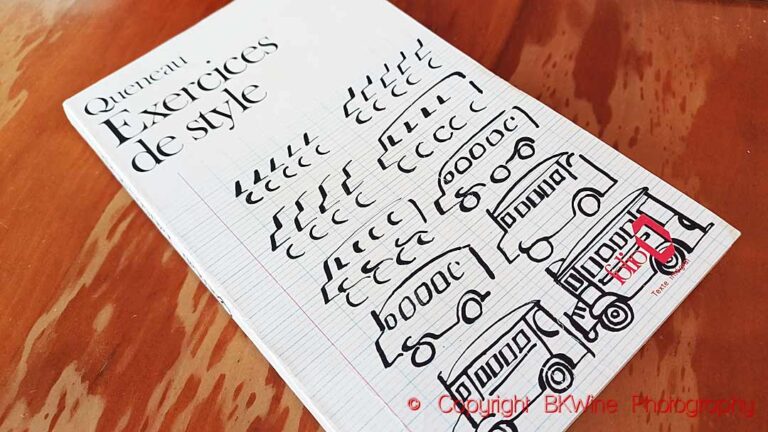 There was a time when people were worried that wines would become uniform, taste the same, become streamlined. What instead happened was that wines that had been on the verge of being faulty disappeared thanks to better hygiene in the cellar, access to new technology, more skills and knowledge. And yes, inexpensive wines probably started to taste more the same than before. But on the whole, wines improved. They improved a lot.
There was a time when people were worried that wines would become uniform, taste the same, become streamlined. What instead happened was that wines that had been on the verge of being faulty disappeared thanks to better hygiene in the cellar, access to new technology, more skills and knowledge. And yes, inexpensive wines probably started to taste more the same than before. But on the whole, wines improved. They improved a lot.
But if we forget about the inexpensive wines and raise the price cap a little bit (we do not have to raise it a lot), then we can probably all agree that there have never been so many wine styles to choose from as there are today.
Admittedly, the wine world does not fully use the diversity of grape varieties that exist. Only 13 different grape varieties together account for a third of the world’s vineyard area, and only 33 varieties cover 50%. But it is not just the grape that determines the style. And without too much trouble, you can easily find wines made from other than these 33 varieties. For instance, come on a wine tour to Portugal, and I guarantee that you can add ten new grape varieties to your list of “grapes I have tasted”.
And anyway, the grape variety has to some extent – or under certain circumstances – been given a subordinate position. This is partly due to two new phenomena: natural wines and orange wines. Although orange wines have been made for several thousand years, as a marketing success in our part of the world, they are a novelty. These are good examples of wines where the focus is on the production process. The character of the wine comes primarily from the way the wine is made. The grape matters less and also the origin, where the wine comes from. It is the skin contact that dominates the character.
We can call these wines “style wines”, they follow a certain style.
Amarone is also a typical “style wine”. The production process gives more character than the corvina grape and the Valpolicella soil, which is also well illustrated by the success of the multitude of amarone imitations from other areas.
Many natural wines, especially without added sulphur, also fall into the category of “style wines”. When you taste it, it is not the grape variety or where it comes from that is most apparent, but rather the absence of sulphur that can give a dominant volatile acidity or an oxidised character or a slight “farmyard” aroma or dry tannins. So, it is primarily how you make the wine that gives the character, not the grape or the place.
But there are other “style wines”. Oak can give a wine style that makes it impossible to feel region or grape. Also, high alcohol content and (over)ripe grapes where dried fruit dominates the aromas. Or wines with low alcohol content from cool climates where the razor-sharp acid takes up all the space. White wines fermented at very low temperatures. And so on.
We sometimes also experience this wine style issue in French restaurants and bars. We ask for a glass of white wine, and then the waiter asks if it should be “fruité ou sec”, i.e. fruity or dry (!). The first time this happened to us, we really put the waiter on the spot when we said we would prefer a dry, fruity wine. Now we know better. A slightly fuller wine, say Languedoc or Rhône, is fruité and a chablis or sancerre is sec.
–
Travel
You still have the opportunity to book a wonderful wine tour in the autumn. The Bordeaux and the Grand Tour are fully booked but there are still a few places for Champagne.
And more exotic, but also very traditional, are of course the winter tours to the southern hemisphere:
- Chile & Argentina
- South Africa
- New Zealand
Travel to the wine regions with an experienced and knowledgeable wine tour operator. You know who. ;-)
If you want to discover the best in the wine regions and get some unforgettable memories, travel with one of the most experienced and most knowledgeable wine tour operators.
More info on our wine tours here.
Enjoy the Brief!
Britt & Per
If you appreciate what we do, you can help us:Tell your friends about the Brief or send it to them.
Like us and follow us on social media:
BKWine Magazine on Facebook | Wine Tours on Facebook
Twitter | Instagram | Linkedin | YouTube
This is just the introduction to the latest issue of the Brief. Subscribe to the BKWine Brief and you will get the whole edition in your mailbox next month.
What’s on at BKWine Tours
BKWine is also one of the world’s leading wine tour operators. Here’s what we currently have on our scheduled wine tour program:
- Champagne, May 4-8, 2022
- Bordeaux and Champagne, Sept 28 – Oct 6, 2022
- Champagne, Sept 28 – Oct 2, 2022
- Bordeaux, October 2-6, 2022
- Chile-Argentina, January 16-29, 2023
- South Africa, February 8-18, 2023
- New Zealand, March 15-30, 2023
We also make custom designed wine tours.
We’re different than most other wine tour operators. We are people who know wine inside out, who travel constantly in wine regions, who write award winning books about wine. Who do this out of passion. Our tours are different from others. More in wine tours: BKWineTours.com.











